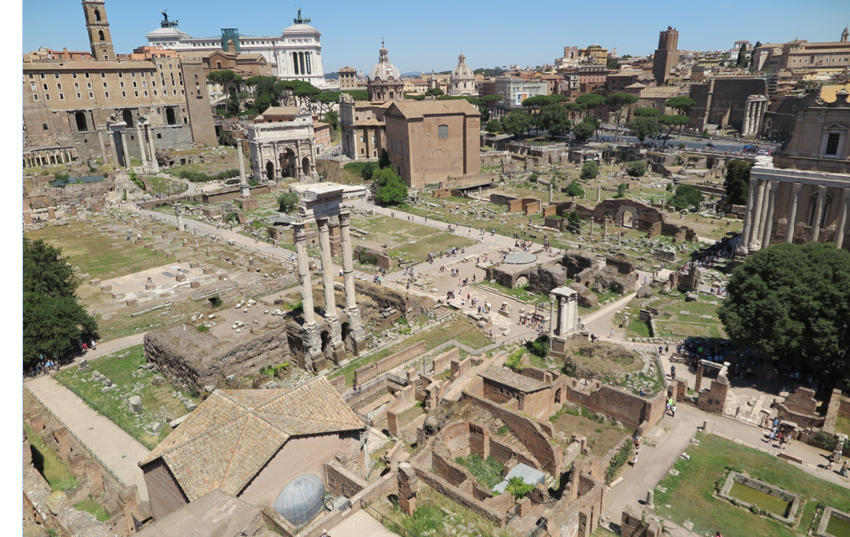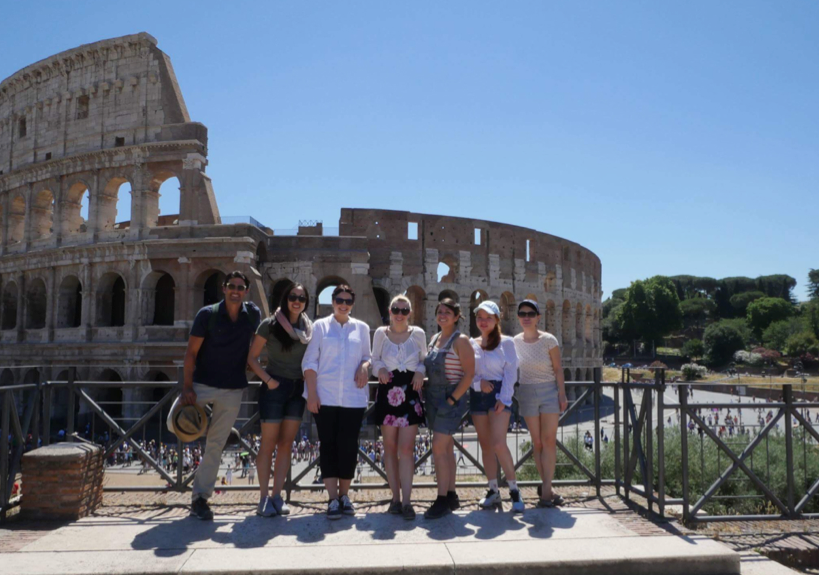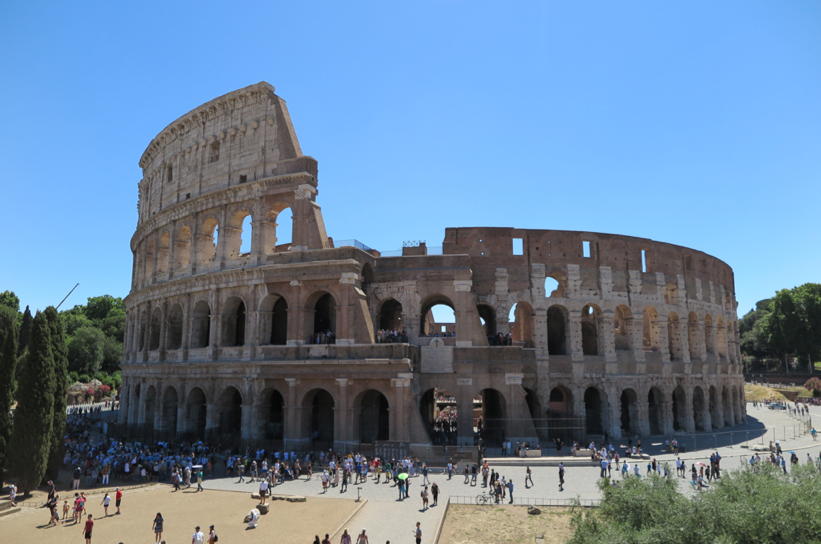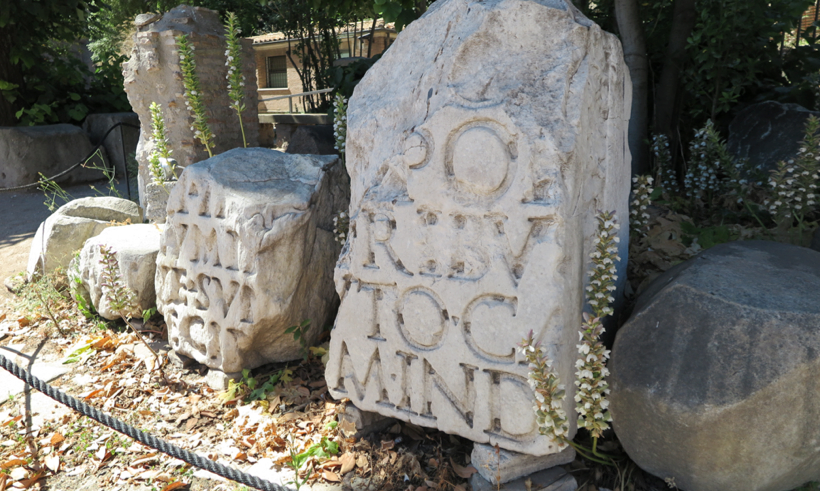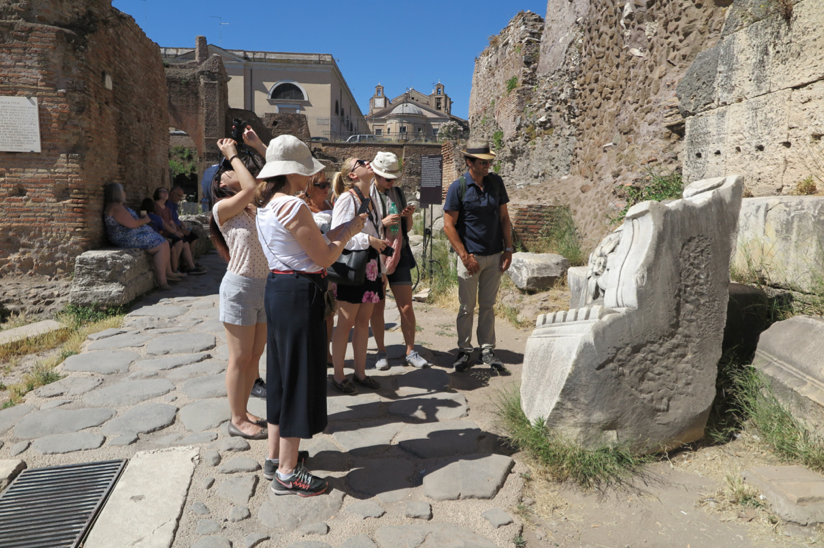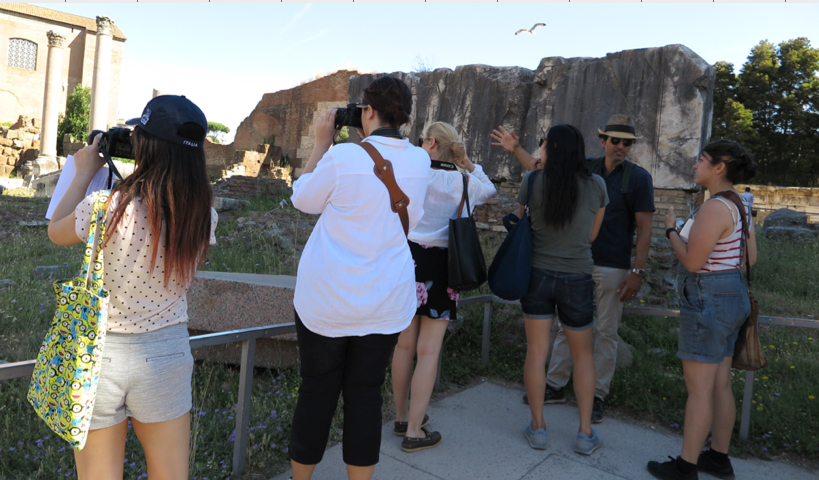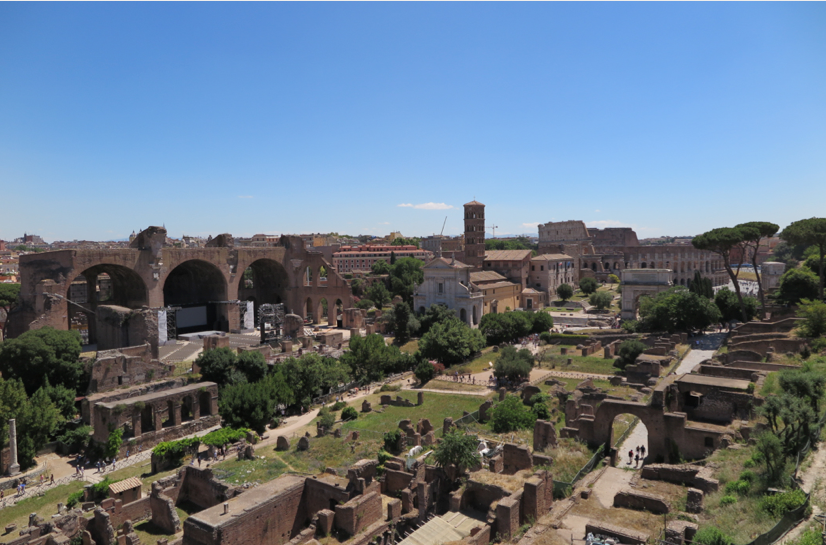Workshop Day 8: Heating Up The Roman Forum
By Bianca Hyejung Seong
[ed note: The weekend is over and the second week of the workshop is underway]
Monday morning we met Dr. Darius Ariya in front of the Trajan Column. From there, he walked us through the ruins of buildings, sculptures and other archaeological sites of the ancient Roman empire.
Lita told us to make sure to wear hats, comfy shoes and put enough sunscreen on. She stressed it a few times. Right after we arrived there, however, I understood why. It was almost impossible to find shade and we roasted under the sun.
Trajan Column, which was our starting point, was constructed in order to celebrate the victory of the Roman Emperor, Trajan, in the Dacian Wars. Figures of about 2,500 people are sculpted on the column. They are figures of soldiers with weapons, priests, sailors, etc. Of course there’s an inscription on the base that tells who they’re commemorating.
Rome was an expanding empire, which had great success in both military and open door policy toward conquered peoples. Ancient people would have thought Rome as a very powerful empire with a well-developed landscape and a political system. Rome had flourished very quickly, then slowly fell. Darius explained that the rise and fall of the Roman Empire could also be found in the style changes of the ruins.
The Roman Forum was the plaza surrounded by government buildings and other important buildings of ancient Rome. There were government buildings, gardens, a marketplace, an auditorium for public speeches and also a jail! There were so many things to look at such as, Temple of Saturn, Arch of Septimius Severus, Basilica Aemilia, sculptures and inscriptions. Most of the inscriptions there were for commemoration. An interesting fact was that some inscriptions were canceled and erased. For example, the letters on the Arch of Septimius were removed, since Caracalla, who was the son of Septimius, assassinated his brother.
Darius used the word “Code” to explain inscriptions and sculpture. Much of the sculpture and architecture showcases the greatness of the emperor. Legibility was a problem at that time so, the inscriptions worked rather like a code. Particular letters were seen as symbols or code, which refer to their emperor’s name. To help people understand the message, they used bronze statues or sculpted figures. There was a hierarchy. The size of the figures shows the relevance, and the scale of the inscriptions shows what is more important.
Even though some sites were still in excavation and some of the ruins were not in good condition, they gave us many clues to understanding and tracking the Roman Empire and the lives in Rome centuries ago. The ruins were the documentation.
Romans used different materials for their buildings, first tuff, then concrete. It was amazing to see how architecture like the Pantheon or the Colosseum can exist till now. We could also find limestone and beautiful yellow stones, which were the materials the Romans used. From the marble floor ruins, we could imagine the Roman decorative style of the floor. They also used colored glass, but we can barely find that today, since the glass was melted down.
The city of Rome was highly landscaped. There were arteries and squares all over. We tried to imagine ancient Roman lives within the sunken garden, auditorium and the beautiful garden with a fountain and water inside. They had a bath complex with a large pool and a heated floor. It must have been too good to be true to experience the culture, system, luxurious architecture and landscapes. When the walk was over, we were exhausted. But it was worth the four hours that we imagined being citizens in ancient Rome.

